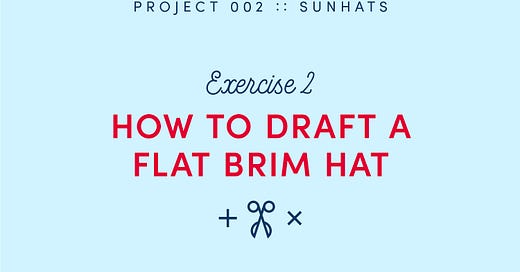Project 002 — Drafting a Flat Brim Sunhat
This post may be truncated in email readers but the full post is available on Substack. Happy drafting!
Hello my sewing mathy friends! Today, we're going to ease in to drafting with circles by drafting a flat brim sunhat, or stovepipe hat. In case you missed it, last week I shared how to measure for a hat and methods for drafting using paper and digitally, using Adobe Illustrator. Check out that post here:
I made my first stove pipe hat many years ago (about 25?) when my little brother requested a Cat in the Hat style hat. He had a, let's say, "unique" style of dressing. I used felt so that I didn't have to finish any seams and drafted a simple hat using circles. And, because it wouldn't be a true Cat in the Hat style without it, the sides of the hat were very tall and striped.
Update 01/2025: This post is now archived for paid subscribers. If you are interested in this project but don’t want to subscribe, you can purchase a pdf version of this project in my shop.





